Český časopis historický 4/2013
112 Kč 130 Kč
STUDIE A MATERIÁLY / STUDIES AND ARTICLES ŽEMLIČKA Josef K organizaci venkovského zázemí středověkých měst (On the Organisation of the Rural Hinterland of Medieval Towns) s. 681–727 The medieval town or city was unable to function in social isolation. From the very beginning of its existence, it was developing relations with the surrounding countryside and attempted to control it. This study focuses on some selected aspects of these relationships, which are crucial for the economic and social history, without exhausting the entire scope of the topic itself. The towns with earlier catchment traditions could expand more successfully and develop flexibility in this regard, first of all, the settlement agglomerations below administrative princely castles, which gradually transformed into natural regional trade, craft and commerce centres already prior to the 13th century. However, the towns without a catchment history had to construct their own hinterland in a more complex manner; the same was true for towns founded in colonised regions where a network of rural agrarian settlements was merely formed parallel to the town itself. The ruler himself was also interested in the prosperity of „his“ towns. In order to facilitate their start „in life“, he did not hesitate to grant them various special rights and privileges, in the first instance the right of a „one-mile exclusion zone“ (Bannmeilenrecht in German), which was to neutralise the competition of countryside pubs, breweries and afterwards that of other competing activities and crafts. At that time neither the medieval towns, especially medium-size ones nor smaller communities, opted out of their relationship to agricultural production, which was also documented in the numbers of large areas of land which were allocated to the town either during the foundation itself or added later. When such a trading or already urban centre developed in the location which was not favourable in the long-term, it could, for the reason mentioned above and for various legal reasons also, be transfered (translatio) to another location. In the areas of the so-called German eastward expansion (Ostsiedlung) a specific linkage between the town and neighbouring villages could occur. The closest linkage took place when the powers of the town and that of its authorities were expanded over a neighbouring countryside district, even though the villages thus „annexed“ were not the property of the town (the so-called weichbild). The elements of such organisation spread from Silesia into northern Moravia throughout the 13th century, yet they did not take root on a large-scale. On the contrary, in Bohemia, such tendencies can be observed, namely the town and its court tried to behave as the relevant authority not merely in adjoining „municipal villages“, but also over the properties of other owners. At the same time and study by study, it becomes proven that the relations of the medieval town to the countryside could not be, especially in their initial stages, encompassed in the iron grip of one permanent and universal stereotype, because every municipal subject did maintain its individual features in varying aspects. Abstrakt: Vztah středověkého města a vesnice má již v bádání dlouhou tradici, v novější době spojenou hlavně se jmény Jindřicha Tomase a Jaroslava Bakaly. Dynamický rozvoj studia městské problematiky v posledních třiceti letech a současně vstup archeologie i dalších disciplín do spektra urbánního výzkumu (závažná je zvláště práce Jana Klápště o proměně českých zemí ve středověku) zároveň nabízí nové možnosti, jak postihnout pozici středověkého města a jeho venkovského okolí v nových dimenzích. Není jistě třeba zdůrazňovat, že poměr města a vesnice byl jedním z určujících faktorů jednak ekonomického, jednak sociálního vývoje v „českém“ i evropském středověku. There exists a long tradition of research into relations between the medieval town or city and the village, at present primarily linked with the names of Jindřich Tomas and Jaroslav Bakala. The dynamic development of the study of urban issues in the past thirty years and simultaneously the entry of archeology and other disciplines into the field of urban research (the work of Jan Klápště about the transformation of the Czech Lands in the Middle Ages being of especial importance) offer new opportunities to capture the role of the medieval town and its rural environs in new dimensions. Undoubtedly, there is no need to emphasise that the relationship between the town and village was one of the determining factors of both economic and social development in the „Czech“ and also European Middle Ages. Key words: history, Bohemia, town, town and countryside, the right of a one-mile exclusion zone, the Middle Ages ČERNUŠÁK Tomáš Nunciatura u císařského dvora v prvních letech vlády Rudolfa II. a české země (Papal Nunciature at the Imperial Court in the First Years of the Reign of Rudolph II and the Czech Lands) s. 728–742 Studies and monographs dealing with the development of confessionalism in the Czech Lands have up until now emphasised the importance of the Papal Nuncio Francesco Bonomi at the Imperial Court in this process. It was based both on his Memorandum of 1584 in which he summarised the main points of the Catholic Confessionalism programme and mainly as he was considered to be the first permanently resident Papal Nuncio in Prague. However, the recently edited nunciature reports from the first years of the reign of Rudolph II show that his predecessors Orazio Malaspina and the short tenure of Ottavio Santacroce, did reside solely in Prague between 1578–1581 where the Royal Court was also based at that time. In addition, a number of points raised in the 1584 Memorandum had already found their regular place in Nuncial reports and initiatives focused on the Emperor Rudolph. Both Nuncios, Bishop Giovanni Delfino and Msgr Orazio Malaspina, actively attempted to enforce reform at Prague University and to negotiate the unification of the Hussites with the Catholic Church. Yet, they also provided support for the education of new entrants to the priesthood and for clergy visitations. However, these Nuncios failed to implement some of these matters, with the main reason being the Emperor Rudolph’s lack of interest to be more expressly involved in the curia initiatives and concepts. Rudolph’s attitude was most likely linked to his ruling strategy, which aimed to achieve, at least at the beginnings of his reign, some balance between the Catholics and Protestants and to promote and fulfil his own political ambitions. The Emperor’s own preferences are evidently reflected in the matter of securing the Prague Archbishopric financially from the property of two Czech monasteries and in banning the French Cistercian Abbot Edmund de la Croix from visiting Cistercian monasteries in Bohemia. In place of the Emperor himself, there were other influential factors involved in the initial stages of Catholic confessionalism itself, which had certain characteristics in the pre- White Mountain period as opposed to later developments. Namely, it involved the foremost Czech and Moravian Catholic nobles who implemented religious homogeneity on their estates and devoted themselves to supporting Jesuit education. Similarly, the Olomouc Bishop Jan Mezoun of Telč declined to countersign the request of the Moravian Estates which included the traditional supplication to the new ruler to grant them religious freedoms. Although the Nunciature at the Imperial Court cannot be overlooked as one of the factors of Catholic confessionalism, its position in this process differed from that of the nobility and the episcopate. Abstrakt: Nedávno editované nunciaturní zprávy z let 1577-1581 poskytují zajímavé informace o počátcích katolické konfesionalizace v českých zemích. Na jejich základě se ukazuje, že jednotlivé body konfesionalizačního programu papežských nunciů u císařského dvora byly realizovány a prosazovány již na počátku vlády císaře Rudolfa II. za prvních trvale v Praze sídlících nunciů Malaspiny a Santacroceho. Z analýzy zpráv lze identifikovat postoje samotného císaře ke kuriálním plánům, stejně jako výrazné činitele předbělohorské katolické konfesionalizace českých zemí z řad šlechty a duchovenstva. The recently edited Nunciature reports from 1577–1581 present valuable information on the beginnings of Catholic confessionalism in the Czech Lands. Based on this, it can be documented that the individual points of the confessionalism programme of the Papal Nuncios at the Imperial Court were realised and were being enforced as early as the beginning of the reign of Rudolph II when the first Nuncios Malaspina and Santacroce resided permanently in Prague. An analysis of the reports makes it possible to identify the Emperor’s attitudes to the Curia plans, as well as to establish prominent agents of the pre-White Mountain Catholic confessionalism in the Czech Lands from amongst the ranks of the nobility and the clergy. Key words: Nunciature, Rudolph II, Confessionalism, the Czech Lands VOREL Petr Státoprávní vyčlenění českých zemí ze Svaté říše římské. Důsledky říšské reformy Maxmiliána I. Habsburského (The Constitutional Exclusion of the Czech Lands from the Holy Roman Empire. Consequences of the Imperial Reform of Maximilian I of the House of Hapsburg) s. 743–804 This study continues a long-term specialist debate on the constitutional relationship of the Lands of the Czech Crown to the Holy Roman Empire in the period of the Early Modern Age. The author draws attention to stereotypical interpretations which do persist even in the most recent works of Czech, Austrian and German historiographies. According to them, the above mentioned constitutional relationship did not basically change from the mid–14th century until the end of the Empire in the early 19th century. Its content rested on contemporary power politics, in one form or another. The author, however, proposes an entirely different interpretation which focuses in particular on changes which occurred in Central Europe at the beginning of the Early Modern Age. The Czech Lands and the Holy Roman Empire, also, were transforming themselves into Estates’ monarchies, in which the authority of individual Imperial Estates was significantly increased to the detriment of the imperial power. The earlier feudatory relationships in medieval Europe, which derived from a personal bond between lord and vassal, were losing their importance within the framework of the Estates’ monarchies. Thus, higher importance was ascribed to newly formed tax systems whose application required, amongst other things, that the boundaries of territories on which they were levied were precisely defined. In the course of the formation of these new relationships, the principal constitutional reform of the Holy Roman Empire, which found itself in a profound power crisis started towards the end of the 15th century, during the reign of Frederick III. The purpose of this Reform was to create new structures of legislative, judicial and executive power (an Imperial Estates Diet, an Imperial Chamber Court, an Imperial Government) and to secure the financing of these institutions, as well as that of a common Imperial Army through the levy of a new Imperial tax. The prime movers of these administrative reforms were the Imperial Estates; Frederick III gave his consent in exchange for securing continuity for the rule of future Hapsburg generations (the election of the Archduke Maximilian as King of the Romans in 1486) and a promise to supply troops for the common Imperial army in the war between Frederick III and the Hungarian King Matthias Corvinus. Even in the initial stage of the Imperial Reform, the Imperial Estates arrived at the decision that the Lands of the Czech Crown would not be incorporated as constituent countries of the newly formed Empire (which was named the Holy Roman Empire of the German Nation to differentiate it from the earlier medieval formation). Thus, the exclusion of the Czech Lands from the Empire was not the result of the emancipation struggle of the Czech Estates, whether national or religious, but instead an activity initiated primarily by the Imperial side. There were more reasons for this decision. From a structural point of view, the Lands of the Czech Crown represented too strong a formation within the framework of the Luxembourg concept of the Empire, which disrupted its stability in terms of power balance. A certain role was also played by nationality aspects (the new empire identified itself as a German-speaking formation, a concept to which the Czech Lands did not correspond) and religious ones (the political decision of the Czech Estates established the equal rights for the Utraquist and Catholic faiths in 1485). However, the landmark argument for the exclusion of the Czech Lands from the newly formed Empire arose only towards the end of 1485, when it became obvious that the Czech Lands were unwilling to participate in the collection of the Common Penny, i.e. a joint Imperial tax. The territorial extent of the Empire was then clearly defined on the basis of this criterium: only those territories that were subject to a jointly agreed Imperial tax became part of the new Roman-German Empire. Thus, the right of protection by jointly financed Imperial troops merely applied to them, also. From the viewpoint of primary sources, this study includes new information and interpretations related to the three milestones which accompany the constitutional exclusion of the Czech Lands from the medieval empire. The first one relates to the content of the fief charter from 1477, by which the Emperor Frederick III granted both the Imperial fief of an office of Elector with the right to participate in elections and the ancient office of Arch-Cupbearer to the King of Bohemia Vladislav II. The original German text of this charter is, however, so ambiguous that different interpretations of its contents are possible. Basically, earlier legal-historical interpretations did not take into account the historical circumstances of the origins of this charter. The Emperor did not issue it of his own free will but under pressure from the Czech Estates (as one of the conditions if the Estates were to provide military assistance to the Emperor against Matthias Corvinus). The meaning of the charter, whose content corresponded to the constitutional notions of the Czech Estates on the contemporary relationship between the then Czech state and the Empire, has to be interpreted in this context. The second substantive historical milestone, which in the author’s view has to be revisited, involves the election of the Archduke Maximilian I as King of the Romans in Frankfurt am Main in 1486. Here, the author draws attention to some until now overlooked and unused primary sources relating primarily to Polish diplomacy. Based on these sources, the author assumes that the shape of the Imperial Reform under preparation (i.e. a new empire without the Czech Lands) and consequently the absence of the King of Bohemia from the 1486 election had been diplomatically agreed in advance with the Jagiellonian Court in Cracow. However, this course of events was disrupted by the intervention of the representatives of the Czech Estates’ community which sent a highly representative and rather numerous embassy to Frankfurt am Main to attend the election under preparation. However, the Czech diplomats were not asked to join in any of the negotiations, which they perceived as an insult. Immediately after the Imperial Coronation in Aachen in April 1486, the Czech Estates in the name of the King Vladislav II sent a protest note to the six remaining Electors with a demand for payment of 500 marcs (units of weight) of gold for breaching the right of the King of Bohemia as Elector according to the terms and conditions of the Golden Bull of Charles IV from 1356. However, a background to these activities was, most likely, a joint attempt by the Bohemian and Moravian aristocracy to prevent the Czech Lands being drawn into the conflict between the Empire and Corvinus since the plans for the dislocation of the Imperial Army envisaged the stationing of a large military contingent directly on the territory of the Margravate of Moravia. The mooted alliance between the Empire and the Jagiellonians was disrupted by this move and several months later the Estates mediated the conclusion of a Czech-Hungarian peace treaty. The Imperial Princes, however, took advantage of this complaint of the Czech Estates regarding the absence of the King of Bohemia at the Imperial election. Within the framework of Imperial reform, they rejected the efforts of Maximilian I to establish a new Austrian-Burgundian Kingdom in the Empire and the transfer of the seventh (Bohemian) electoral vote to this suggested formation. All six German Electors pledged, in the form of a charter, that the right to participate in Imperial elections, belonging to the King of Bohemia as Elector, was not to be violated in future. The strengthening of Hapsburg power within the Empire was restrained by this decision. Thus, an unusual state of affairs evolved in which the ruler reigning beyond the boundaries of the Empire (as it was newly defined within the framework of the formation of the 1485 tax system) became the bearer of one of the electoral votes. From a constitutional point of view, the exclusion of the Czech Lands from the Empire was finalised at the constituent Imperial Diet of Worms in 1495. The Czech Lands were not represented at any level of the newly formed Imperial judicial, legislative or executive power and the King of Bohemia did not become a member of the College of Electors (nor became one later, until 1708) in terms of the newly established Imperial Diet, constituted on the Estates principle. As a titular elector, he merely had the right to be present at the Imperial election. He was not, however, considered to be a member of the Imperial Estates’ community or a Prince of the Empire and the same applied to all Bohemian, Moravian, Silesian or Lusatian aristocrats (unless they were Imperial Princes in their own right, such as, for example, some rulers of territorial Silesian dukedoms). This new constitutional state of affairs was finally completed through the consent of all four participating parties (King of the Romans – the Imperial Estates – the King of Bohemia – the Czech Estates), therefore its emergence was conflict-free. It was kept in force even after the Hapsburgs’ accession to the Czech throne because it was more beneficial for Ferdinand I from the point of his long-term ruling strategy. The political consequences of the exclusion of the Czech Lands from the Empire first manifested themselves markedly during the political crisis in the Empire in the course of the so-called Smalkadic War (1546–1547). This state of legal affairs was also consequently verified at the level of the Empire within the framework of the discussions at the Imperial Diet in Augsburg in 1548. Despite later attempts at the beginning of the 17th century on the part of the Czech Protestant Estates to have the Czech Lands re-admitted to the Empire, this state remained unchanged for nearly two hundred years. Only at the end of the 17th century, for reasons of power politics, Hapsburg diplomacy formulated the notion of an uninterrupted continuity and the belonging of the Czech Lands to the Empire in order to strengthen its positions at the Imperial Diet. It succeeded in turning this intention into a reality through the re-admission of the King of Bohemia. At the Imperial Diet in 1708, he became a new member of the College of Electors (Kurfürsten). However, the above mentioned Baroque interpretation presented by the official Hapsburg historiography at the end of the 17th century did not correspond to historical reality. From the very beginning of the emergence of the Early Modern Roman-German Empire in 1495, the Lands of the Czech Crown were not part of it, although in the course of the following two centuries these two neighbouring state formations happened to have a joint ruler from time to time. This formerly rather unusual perspective, yet in the author’s view, the one which is sufficiently documented by primary sources, on the constitutional development of Early Modern Medieval Europe provides a broader framework for interpretations of long-term trends in the history of the 16th and the 17th centuries. Abstrakt: Studie navazuje na dlouhodobou odbornou diskusi, týkající se státoprávního vztahu zemí Koruny české k Svaté říši římské v období raného novověku. S využitím nových pramenných zdrojů se autor zaměřuje na období 1477-1495, během kterého proběhlo vyčlenění českých zemí z nově utvářené Římsko-německé říše. Vznik nového státoprávního uspořádání proběhl za souhlasu všech čtyř zúčastněných stran (krále římského - říšských stavů - krále českého - českých stavů), proto neměl konfliktní charakter. Vyčlenění českých zemí z říše nebylo důsledkem zápasu českých stavů o náboženskou či národní emancipaci, ale naopak šlo o aktivitu, vzešlou primárně ze strany říšských stavů v rámci vnitřní restrukturalizace říše na počátku říšské reformy Maxmiliána I. Od samotného vzniku raně novověké Římsko-německé říše roku 1495 její součást země Koruny české po téměř dvě století de facto ani de iure netvořily, byť v průběhu následných dvou století měly oba tyto sousední státní útvary čas od času společného panovníka. Tento dosud neobvyklý, pramenně však podle autorova názoru dostatečně podložený pohled na státoprávní vývoj raně novověké střední Evropy, poskytuje nový širší rámec pro interpretace dlouhodobých vývojových tendencí v dějinách 16. a 17. století. This study continues long-term specialist discussions on the constitutional relationship between the Lands of the Czech Crown and the Holy Roman Empire in the period of the Early Modern Age. With the help of new primary resources, the author focuses on the period 1477–1495 during which the exclusion of the Czech Lands from a newly formed Roman-German Empire took place. The emergence of a new constitutional arrangement was completed through the consent of all four participating parties (King of the Romans – the Imperial Estates – the King of Bohemia – the Czech Estates), therefore it was conflict-free. The exclusion of the Czech Lands from the Empire was not the result of the emancipation struggle of the Czech Estates, whether national or religious, but it occurred within the context of the internal re-structuralisation of the Empire at the beginning of the Imperial Reform of Maximilian I. From the very beginning of the emergence of the Early Modern Roman-German Empire in 1495, the Lands of the Czech Crown were not part of it, neither de facto nor de iure, although in the course of the following two centuries these two neighbouring state formations happened to have a joint ruler from time to time. This formerly rather unusual perspective, yet in the author’s view, sufficiently documented by primary sources, on the constitutional development of Early Modern Medieval Europe provides a broader framework for interpretations of long-term trends in the history of the 16th and the 17th centuries. Key words: the Holy Roman Empire, the Czech Kingdom, constitutional exclusion, Czech Estates’ community, Imperial Princes, Imperial fief, 1477, elector, Arch-Cupbearer, election of King of the Romans, Frankfurt am Main, Imperial diet, 1495, Worms, Emperor Frederick III, Emperor Maximilian I, King, Matthias Corvinus KUBEŠ Jiří Volba a korunovace Karla VI. římským císařem v roce 1711 (The Election and Coronation of Charles VI as Holy Roman Emperor in 1711) s. 805–841 There does not seem to exist a more detailed analysis of the given topic in historiography written either in Czech or German, although, in addition to the known contemporary printed materials, we have at our disposal primary sources from the central records (especially in the National Archives in Prague, Bohemian Court Chancellary) as well as aristocratic archives (primarily in the State Regional Archive Plzeň, workplace: Klášter; the Family Archives of the Windisch-Grätz family). Thus, based on the knowledge of these sources, the author first revisits the events following the death of the Emperor Joseph I in April 1711 until the coronation of his brother Charles VI as Holy Emperor in Frankfurt am Main in December 1711. He primarily follows the events in three places – in Vienna at the court of the Regent Empress dowager Eleonora Magdalena, at the court of Charles III of Spain in Barcelona, or possibly also in Milan, but particularly in Frankfurt am Main where the pre-election negotiations of the seven Electors took place (because the Elector of Bavaria and the Elector of Cologne were under a ban of the Empire at that time). These were also attended by the ambassadors of the King of Bohemia, namely Ernst Friedrich of Windisch-Grätz, Franz Ferdinand Kinský and Caspar Florentin of Consbruch. The negotiations started in August and Charles Hapsburg was the only candidate put forward. Yet, it did not mean that everything went smoothly – the electoral capitulation was drafted only after two months of complicated, concession riddled negotiations before the ceremonial election itself of the still absent Charles as Holy Roman Emperor could take place (12th October). Then, the Imperial coronation followed after yet another interval of two months (22nd December). In the second part, the author researches the events of 1711 in a wider context and compares them with preceding elections and coronations. He attempts to discover to what degree these processes were similar, or to what extent they differed from one another and to establish the reasons why deviations from traditions, which people in the Early Modern Ages esteemed so much, occurred; who benefited from these innovations and how they influenced the functioning of the Empire as a whole. He comes to the conclusion that there had been deviations from the tradition in a number of matters in 1711. New ceremonial rules were approved which no longer emphasised the foremost role of the King of Bohemia as Elector. In addition, the Bohemian delegation did not succeed in implementing the electoral capitulation from 1690 (work had to be undertaken on finalising the Eternal capitulation). The assent of the Archbishop of Mainz was gained in exchange for the strengthened influence of the Reich’s Estates on the running of the Reichskanzlei and of the Reichshofrat. The Bohemian electoral embassy did not manage to have Augsburg selected as the site of the coronation, either. The changes also concerned the election and coronation which were otherwise the most rigid parts of both processes. The Hapsburgs did try to present themselves as the „guardians“ of tradition and defenders of the Golden Bull of 1356. Yet, as these otherwise absolutist monarchs could not turn the clock back to the Middle Ages, they were realistic enough, to defend at least the status quo from preceding elections and coronations so that they would not be seen as mere by-standers witnessing the strengthening of the power of the Imperial Estates to the detriment of the central power. However, in reality their fight was lost in advance in respect of many matters. The Electors were fully capable of taking advantage of the ambiguities of the system and any innovation led to the strengthening of their position for the future. The Empire gradually evolved and this was also evident in terms of its central ceremony which came to have rather little in common with its medieval roots. It was not merely that the Imperial coronation was no longer held in Rome after the 1530s but the number of electors also increased over time and their hierarchy changed. Ever since the Reformation era the importance of pre-election negotiations increased and throughout them, talks were held anew about ever more complex and longer electoral capitulations. From this time onwards the Protestant Electors would leave the Mass before Holy Communion was given in order to avoid communion under one kind. Candidates abstained from the 1711 election and they could not, therefore, be traditionally seated on the altar. Thus, an ever more paradoxical situation evolved – the pre-election negotiations and a number of features from the election itself corresponded to the complex situation in the Empire of that time, yet, the Coronation Mass and the entire ceremony of coronation remained, apart from a few exceptions, the same as it had been in the Middle Ages. It represented somewhat of the essential nature of the original Imperial culture. However, in the 18th century this was increasingly seen as an antiquated relic, which was disparaged even by those most prominent participants in it. Thus, the Empire was transformed from within and in a sense it destroyed itself because the eminent and powerful men of the day gradually lost their belief that the Empire was their common homeland. Abstrakt: Autor se na základě stávající literatury, soudobých tisků a zejména pak pramenů z České dvorské kanceláře a Rodinného archivu Windischgrätzů pokouší poprvé v českém prostředí detailněji pojednat o volbě a korunovaci Karla VI. v roce 1711. Text má dva základní cíle. Předně jde o podrobnější rekonstrukci dění po smrti císaře Josefa I. (duben) ve Vídni u regentky Eleonory Magdaleny, u krále Karla III. Španělského v Barceloně, resp. v Milánu, ale především ve Frankfurtu nad Mohanem. Tam se konalo za účasti českého kurfiřtského poselstva předvolební jednání, během něhož se po přibližně dvou měsících dospělo k sestavení volební kapitulace a vlastní slavnostní volbě Karla římským králem (říjen). Po ní následovala opět s dvouměsíčním odstupem císařská korunovace (prosinec). V druhé části pak autor sleduje události roku 1711 v širším kontextu a srovnává je zejména s předchozími volbami a korunovacemi. Pokouší se zjistit, nakolik se tyto procesy podobaly, resp. jak moc se lišily, a poznat důvody, proč docházelo k odchylkám od tradice, které si raně novověcí lidé tolik cenili, komu tyto inovace sloužily a jak se podepsaly na fungování říše jako celku. Based on the existing literature, contemporary printed materials and especially primary sources from the Bohemian Court Chancellary and the Family Archives of the Windisch- Grätz family, the author attempts, for the first time ever in a Czech historiography to deal comprehensively with the election and coronation of Charles VI in 1711. This text has two main purposes. Primarily, it involves a more comprehensive revisiting of the events after the death of Emperor Joseph I (April) in Vienna at the court of the Regent Empress dowager Eleonora Magdalena, at the court of Charles III of Spain in Barcelona, or possibly also in Milan, yet, especially in Frankfurt am Main. There, the pre-electoral negotiations, attended by the Bohemian electoral embassy took place, during which an electoral capitulation was drafted after approximately two months and the proper ceremonial election of Charles as King of the Romans (October) took place. Thereafter, the imperial coronation followed, yet again after an interval of two months (December). In second part, the author researches the events of 1711 in a wider context and compares them with preceding elections and coronations. He attempts to discover to what degree these processes were similar, or to what extent they differed from one another and to establish the reasons why deviations from traditions, which people in the Early Modern Ages held so dear, occurred; who benefited from these innovations and how they influenced the functioning of the Empire as a whole. Key words: Charles VI, Frankfurt am Main, 18th century, the Holy Roman Empire, Emperor, elections, coronation, electors MOUT Nicolette „The Beautiful Days in Aranjuez“. A Dutch History Student in Czechoslovakia 1966–1967 („Překrásné dny v Aranjuez“. Nizozemská studentka historie v Československu v letech 1966–1967) s. 842–859 V roce 1964, aniž by věděla příliš mnoho o českých dějinách nebo o současném životě v ČSSR, přijela Nicolette Mout na zájezd studentů historie (Amsterdamská univerzita) do Prahy. Její rodiče navštívili Prahu v roce 1955 a neodradila je ani železná opona ani studená válka, protože byli přesvědčeni o existenci základní historické a kulturní jednoty západní a střední Evropy. V roce 1964 zapůsobilo na Nicolette Mout jak hlavní město Praha, tak české dějiny, že s pomocí profesora Jacoba Pressera (Amsterdamská univerzita) a profesora Josefa Polišenského (Univerzita Karlova) získala výzkumná stipendia na roky 1966 a 1967, aby mohla napsat svoji závěrečnou univerzitní práci (MA) o J. A. Komenském a Nizozemské republice. Když se ocitla v Praze, musela se rychle naučit česky a osvojit si detailní znalosti rané moderní německé a české paleografie. Později se také začala učit maďarsky. Vypomáhala při výuce holandštiny na Univerzitě Karlově a tajně předávala nizozemské nekomunistické noviny a týdeníky učitelům tohoto jazyka. Školitelem Nicolette Mout byl Josef Polišenský, který se jí maximálně snažil zprostřed- kovat přístup do svého rozsáhlého okruhu přátel a kolegů a pomohl jí i mnoha jinými způsoby. Seznámila se s mnoha vědeckými pracovníky a obdržela od nich užitečné rady. Nejenže pracovala pravidelně na výzkumu v mnoha knihovnách v Praze, ale také cesto- vala po celé zemi ve společnosti prof. Polišenského a přitom navštívila mnoho českých a slovenských knihoven a archivů. Krásy krajiny a její historie na ni hluboce zapůsobily, příčemž také odhalovala výraznou evropskou dimenzi obsahu těchto archivů a knihoven. Rozvíjel se u ní obecný zájem o raně moderní dějiny Českého království. Protože nizo- zemské knihovny neměly ani mnoho knih o české historiografii, ani mnoho současných literárních děl, zakoupila hodně knih, aby si je mohla poslat domů. V jejích kontaktech se svými přáteli v Praze hrála velkou roli současná politická situace v ČSSR. Někteří z jejích přátel a také Polišenský byli velice otevření, co se týče této a další problematiky. Podali jí vysvětlení nejen o minulém a současném útlaku intelektuálů a dalších osob, ale také o všeobecné situaci historického výzkumu ve své zemi. V průběhu pozdních šedesátých let se situace trochu zlepšila v tom smyslu, že mnoho kolegů ze západních zemí přijíždělo na návštěvy, ať už na výzkum nebo přednášet a některým českým historikům bylo dovoleno vycestovat na západ. V říjnu 1966 přijel další student-badatel ze západu, Robert Evans, aby provedl výzkum o Rudolfovi II. v rámci svého doktorátu na Univerzitě v Cambridgi. Pražské ministerstvo školství a kultury nahlíželo příznivě na pokračující kulturní a akademické výměny mezi Československem a Nizo- zemskem, také s ohledem na nadcházející vzpomínkové oslavy J. A. Komenského (1967 a 1970), a Polišenský a Nicolette Mout se v tomto směru snažili pokračovat. V září 1966 tehdejší ministr školství a kultury Jiří Hájek povolil Nicolettě Mout, aby se zúčastnila zasedání sekce o „pozdním feudalismu“ (raně moderní dějiny) na IV. kongresu československých historiků v Brně. Tam probíhal politicky důležitý boj mezi historiky, kteří obhajovali převládající komunistickou ideologii, a těmi, kteří volali po větší intelektuální svobodě. V té době bylo možné pozorovat určité uvolnění pravidel ve sféře literatury a divadla. Během let 1966–1967 si mnoho lidí dělalo velké naděje, že se věci konečně začaly měnit. Již v Nizozemí, v roce 1968, obdržela Nicolette Mout dopis Rady Amsterodamské univerzity, který vyjadřoval jejich hlubokou lítost nad tím, že o ní poskytli určité informace Nizozemské tajné službě. Avšak pro ni „překrásné dny v Aranjuez“ skončily, když opustila Prahu v říjnu 1967, ale podobně jako její čeští přátelé si naštěstí nebyla vědoma věcí, které se měly stát v srpnu 1968. Abstrakt: Nicolette Mout came to live in Prague in 1966 and again in 1967 on an academic exchange program as the first Dutch research student after the Second World War. The subject of her research for a MA in history (University of Amsterdam) was Comenius’s relations with the Dutch Republic. In Prague, her supervisor was Professor Josef Polišenský (1915–2001). In these reminiscences her contacts with the Czechoslovak academic world are described against the background of changes leading up to the Prague Spring. Key words: History, Dutch-Czech relations, Charles University of Prague, University of Amsterdam, J. A. Comenius, Josef Polišenský, late 1960’s
| Nakladatel: | Historický ústav AV ČR, v.v.i. |
| Jazyk : | Čeština |
| Počet stran: | 243 |
-
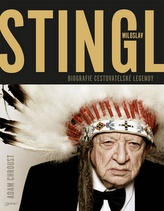
Stingl Miloslav. Biografie cestovatel...
Chroust, Adam
-
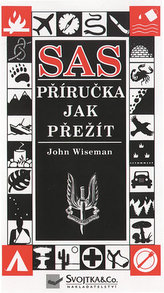
SAS Příručka jak přežít
John Wiseman
-

Martin Konvička
Eva Hrindová; Miroslav Adamec
-

Tarot skrytých světů
Stephanie Pui-Mun Law; Barbara Moore
-
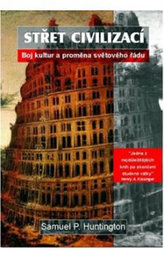
Střet civilizací
Samuel P. Huntington
-
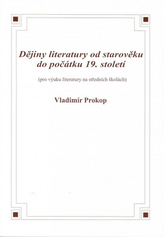
Dějiny literatury od starověku do poč...
Vladimír Prokop
-
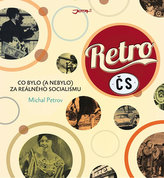
Retro ČS
Michal Petržela
-
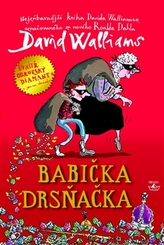
Babička drsňačka
David Walliams
-
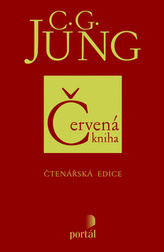
Červená kniha Čtenářská edice
Carl Gustav Jung; Sonu Shamdasani; John Peck
-
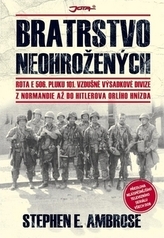
Bratrstvo neohrožených
Stephen E. Ambrose
-
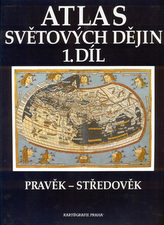
Atlas světových dějin 1. díl
-
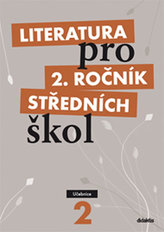
Literatura pro 2. ročník středních škol
Taťána Polášková a kol.
-
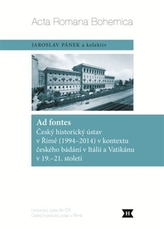
Ad fontes
Eva Doležalová
-
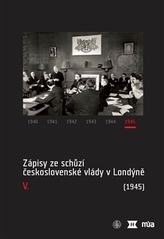
Zápisy ze schůzí československé vlády...
Ivan Šťovíček
-
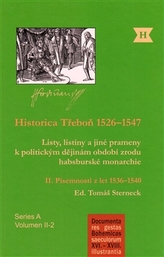
Historica Třeboň 1526–1547
Tomáš Sterneck
-
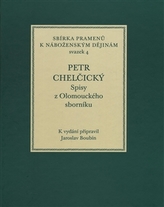
Petr Chelčický. Spisy z Olomouckého s...
Jaroslav Boubín





